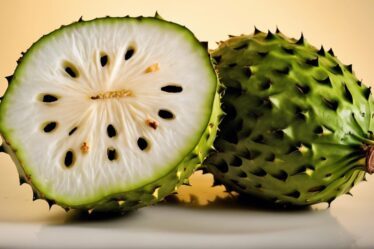
Introduction
In the world of fruits, there exists a group that boasts delicious flavors and a unique feature—a stone-like pit nestled within their juicy flesh. Aptly named “stone fruits,” these delectable treats are cherished for their delightful taste, versatility in culinary creations, and the intriguing contrast between their soft exterior and the complex, stone-like pit at their core. This blog post will take a flavorful journey through the fascinating world of stone fruits, exploring their diversity, culinary uses, and the natural wonders of their pit-like seeds.
What Are Stone Fruits?
Stone fruits are a distinct category characterized by their fleshy, edible outer layer and the complex, stone-like pit or “stone” that lies within, housing a seed. These pits give the fruits their unique name, as they resemble stones in texture and hardness. The stone fruits family includes various delicious options, each with its distinct flavor and culinary potential.
A Bounty of Stone Fruits
Let’s take a closer look at some of the most popular and beloved stone fruits:
Apricots: With their sweet and slightly tart flavor, apricots are a delightful stone fruit often enjoyed fresh, dried, or in jams and preserves.
Cherries: Cherries come in various varieties, including sweet cherries with juicy, candy-like flavor and sour cherries, perfect for pies and tarts.
Peaches: Known for their juicy and fragrant flesh, peaches are a summertime favorite and are often used in desserts, salads, and even savory dishes.
Nectarines: Nectarines are similar to peaches but have smooth skin. They offer a sweet and tangy flavor that is perfect for snacking or adding to fruit salads.
Plums: Plums come in various types, including Japanese, European, and Italian. They can be eaten fresh, dried into prunes, or used in various culinary applications.
Mangoes: With their exotic, tropical flavor, mangoes are beloved worldwide. They are often enjoyed fresh, in smoothies, or as a critical ingredient in salsas and chutneys.
Almonds: While not an actual fruit, almonds are closely related to stone fruits and share the characteristic hard pit. They are a popular nut known for their versatility in cooking and baking.
Culinary Adventures with Stone Fruits
The culinary potential of stone fruits is boundless. These fruits can be incorporated into a wide range of dishes, from breakfast to dessert and everything in between:
Fresh Snacking: Enjoy stone fruits fresh, straight from the tree, for a burst of natural sweetness and juiciness.
Desserts: Stone fruits shine in cobblers, crisps, pies, and tarts, where their sweet and tangy flavors create a symphony of taste.
Preserves and Jams: Stone fruits, when cooked down with sugar and sometimes spices, become delectable jams, preserves, and fruit compotes.
Savory Dishes: Stone fruits can be incorporated into savory dishes like salads, salsas, and glazes for meats, adding a touch of sweetness and depth of flavor.
The Enigmatic Stone
While the flesh of stone fruits is celebrated for its deliciousness, the hard pit or stone inside holds its own intrigue. These pits contain seeds that, in some cases, can be cultivated to grow new fruit-bearing trees. This natural wonder adds another layer of fascination to the world of stone fruits.
Conclusion
Stone fruits are nature’s delicious gems, offering a symphony of flavors and culinary possibilities. From the sweet succulence of peaches to the tartness of cherries and the exotic allure of mangoes, these fruits delight our taste buds and inspire culinary creativity. As we savor their juicy flesh and admire their stony cores, we can’t help but appreciate the beauty and diversity of these remarkable gifts from nature. So, the next time you bite into a juicy peach or savor a slice of cherry pie, take a moment to celebrate the wonders of stone fruits and their unique, stone-like seeds that hold the promise of future harvests.



